Most people believe an accessible garden means sacrificing style. Home improvement shows often feature sprawling, high-maintenance landscapes or, on the flip side, clinical-looking ramps and railings that feel like an afterthought. Here’s what they’re not telling you: good design is inclusive design. After more than a decade specializing in universal design and aging-in-place solutions, I’ve worked on hundreds of projects proving that the most beautiful, functional, and resilient outdoor spaces are the ones designed for everyone from the start. These 20 patio garden ideas will show you how to create an outdoor haven that doesn’t just look stunning but adapts gracefully to every chapter of life.
Getting Started with Essential Patio Garden Fundamentals (Part 1)
Let’s begin where every great patio garden does—with a solid, thoughtful foundation. These first steps aren’t just about picking plants; they’re about making smart choices that will pay you back with comfort, safety, and beauty for years to come.
1. Optimizing Paving Materials for Longevity and Mobility
The ground beneath your feet is the most important decision you’ll make. It’s the literal foundation of every experience in your patio garden. You need a surface that’s smooth, stable, and non-slip—no exceptions. Think large-format porcelain pavers with minimal grout lines, or brushed concrete that provides a dependable, even surface for someone using a walker, a wheelchair, or just chasing a toddler. A bumpy flagstone path might look rustic, but it’s a twisted ankle waiting to happen.

A tiny detail that makes a huge difference is a gentle, almost imperceptible slope (about 2%) away from your house. This prevents water from pooling and turning into a hazardous puddle or a sheet of ice come winter. In my universal design expert practice, I’ve seen that getting the ground plane right from the very beginning solves about 80% of future accessibility issues. Investing in a solid, well-installed base means your patio won’t heave and crack, creating trip hazards down the line. It’s the least glamorous part of the project, but it’s the one that ensures your garden is a place of joy, not worry.
2. Strategically Incorporating Raised Planter Beds for Accessible Gardening
Gardening shouldn’t be a pain in the back. Or the knees. Raised planter beds are a game-changer because they bring the garden up to a comfortable height, whether you prefer to sit, stand, or kneel. This isn’t just about accessibility; it’s about making the entire experience more enjoyable and sustainable for any gardener.

For someone gardening from a wheelchair, a bed that’s about 24 inches high and no more than two feet deep allows easy reach to the center. For those who prefer to stand, a height of 36 inches—about countertop height—is perfect. I once worked with a family whose grandmother had given up her beloved roses due to arthritis. We built a series of cedar beds at a comfortable sitting height, complete with a wide cap-rail that served as a perch. She was back to her gardening in a week. That’s the power of thoughtful design.
3. Leveraging Vertical Garden Structures to Maximize Small Footprints
When you run out of room to grow out, grow up. Vertical gardening is a brilliant way to introduce lush greenery into even the tightest spaces, turning a boring wall into a living work of art. This could be a simple trellis for climbing jasmine or a more complex system of wall-mounted pockets perfect for an herb and lettuce garden right outside the kitchen door.
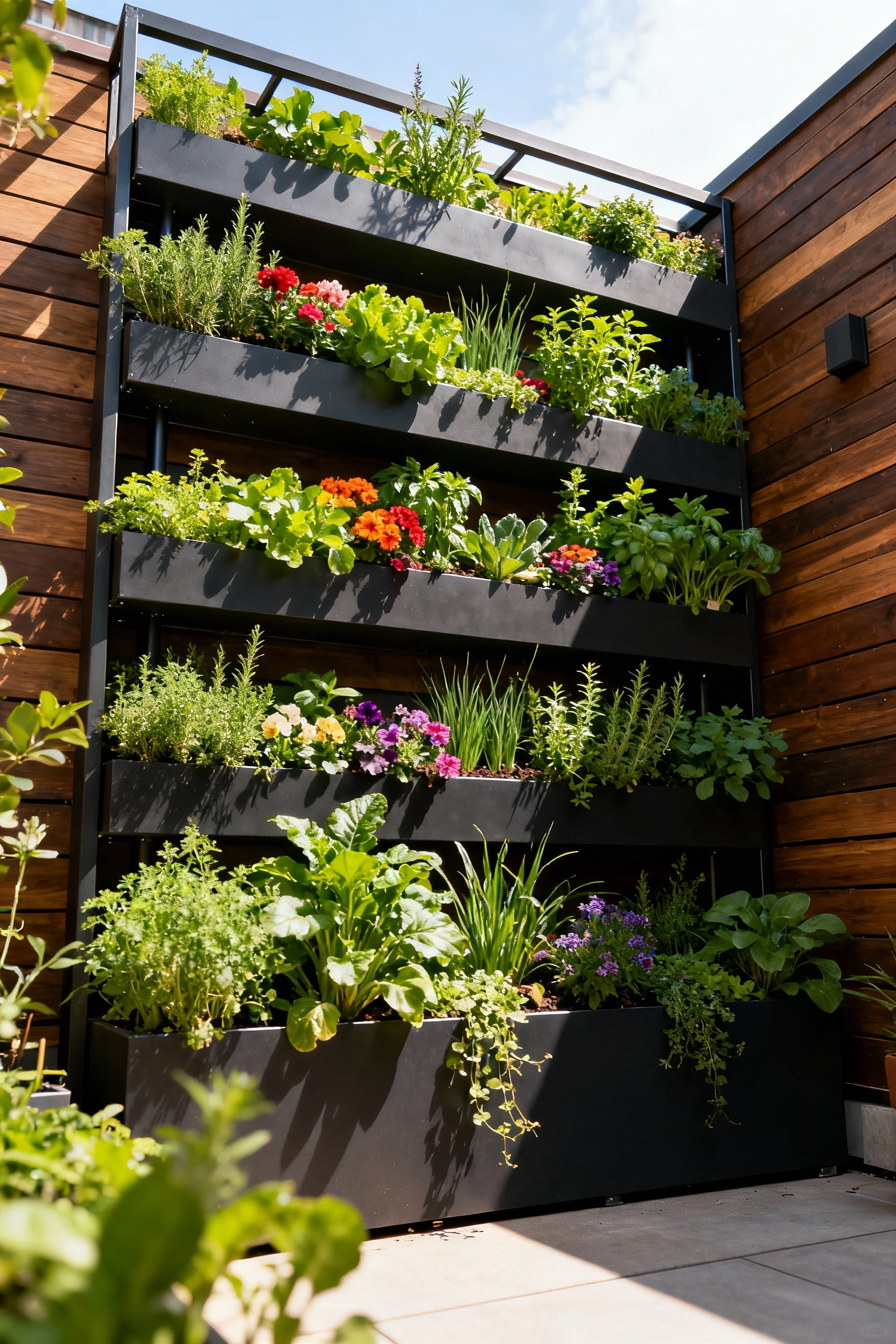
These vertical structures do more than just save space. They add visual drama, create privacy, and can even help cool down a hot, sun-baked wall. Think about a wall of fragrant herbs or a cascade of strawberries. It becomes an interactive feature, a conversation piece. And for anyone with limited mobility, it brings the garden right to eye level, making it easy to tend and harvest without any bending or reaching.
4. Implementing Integrated Seating Solutions for Multifunctional Comfort
Instead of scattering a few patio chairs around, think about building seating right into the landscape. A low retaining wall with a smooth, wide cap becomes a perfect, permanent bench. A built-in L-shaped bench can define a conversation area and offer more stable, comfortable seating than any standalone chair ever could. It’s always there, always ready, and never in the way.
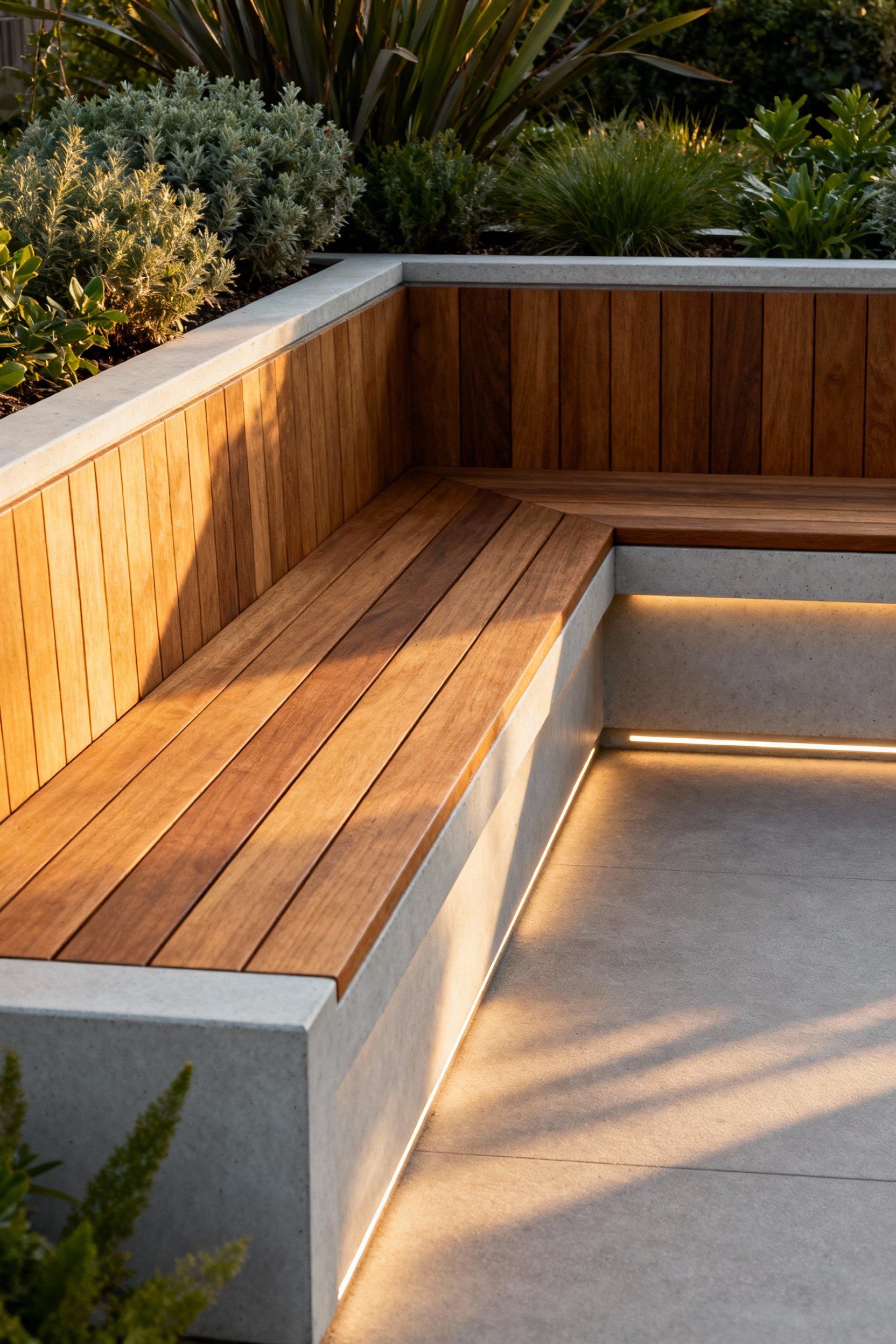
Integrated seating is a core principle of good universal design because it offers stability. No one has to worry about a wobbly chair. It provides clear spots for rest and connection. I love designing benches that have a backrest or are tucked against a planter wall, offering a sense of security and support. Adding a hidden storage compartment underneath is even better—a perfect spot for cushions, blankets, or kids’ toys.
Getting Started with Essential Patio Garden Fundamentals (Part 2)
With a strong layout in place, our focus shifts to the living elements. Choosing the right plants isn’t just about color; it’s about creating a resilient, low-effort ecosystem that thrives in your specific corner of the world.
5. Selecting Drought-Tolerant Native Species for Low-Maintenance Resilience
Here’s the thing about gardening: it’s supposed to be fun, not a chore. The single best way to reduce maintenance is to choose plants that already know how to live where you live. Native species are adapted to your local climate, your soil, and your rainfall patterns. They don’t need constant fussing, fertilizing, or watering once they’re established. They just work.
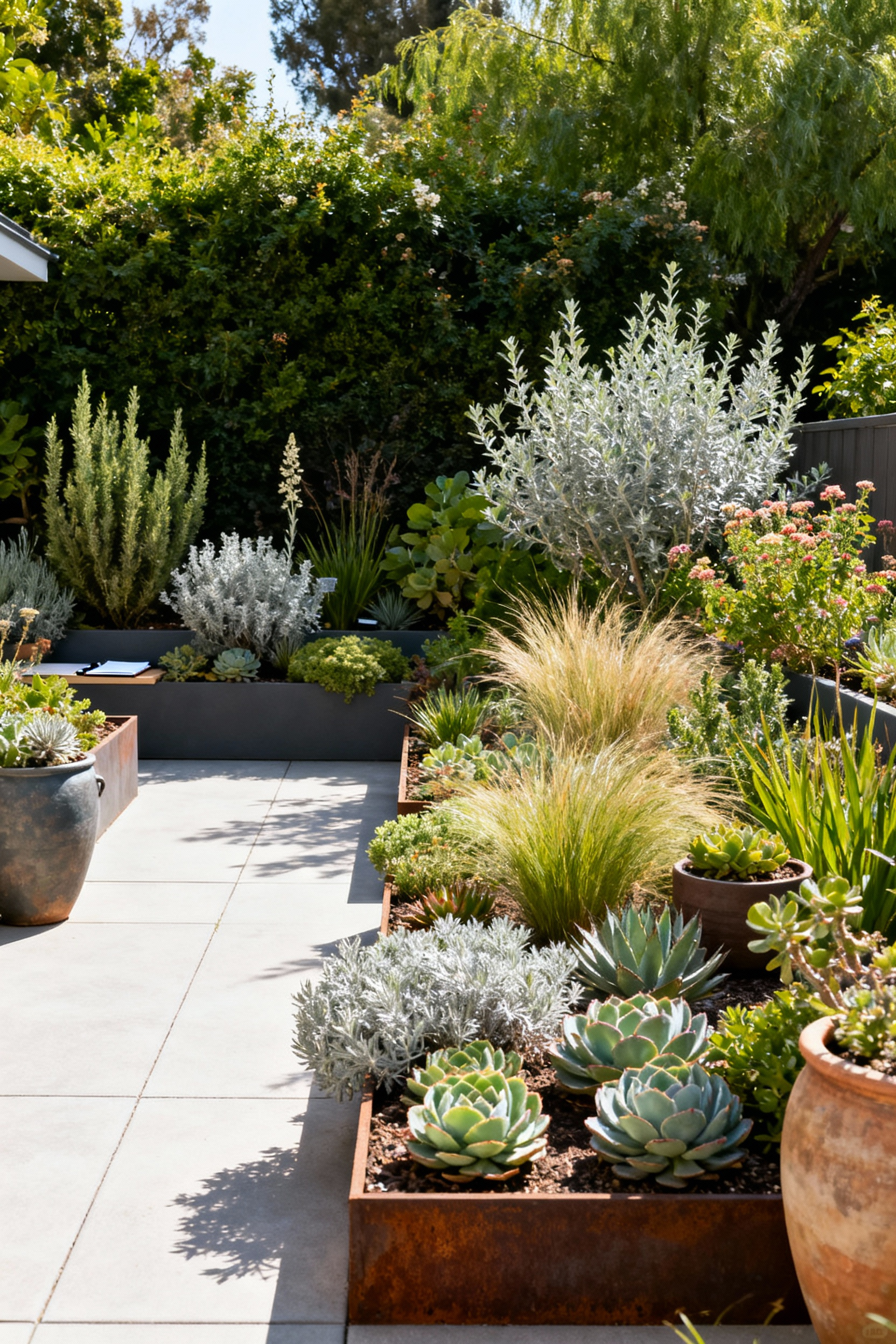
This is more than an ecological choice; it’s a practical one. By planting natives like Coneflower, Little Bluestem grass, or local Sedums, you’re creating a garden that can handle a heatwave and support local pollinators without you lifting a finger. It’s a forward-thinking approach that builds a resilient, self-sustaining system. Your garden becomes a place you get to enjoy, not a second job you have to manage.
Elevating Your Patio Garden Approach with Intermediate Techniques (Part 1)
Now that the basics are covered, we can add layers of intelligence and intention. These techniques are about making your garden safer, more efficient, and enjoyable at any hour, anticipating needs before they even arise.
6. Designing Intuitive Path Systems for Safe and Easy Navigation
A path should be more than just a way to get from point A to B. It should be a gentle invitation to explore. Paths in a universally designed garden are wide—at least 48 inches—so two people can walk side-by-side, or someone with a walker has plenty of room. Curves should be gentle and sweeping, and any change in level should be handled with a gradual ramp, never an unexpected step.
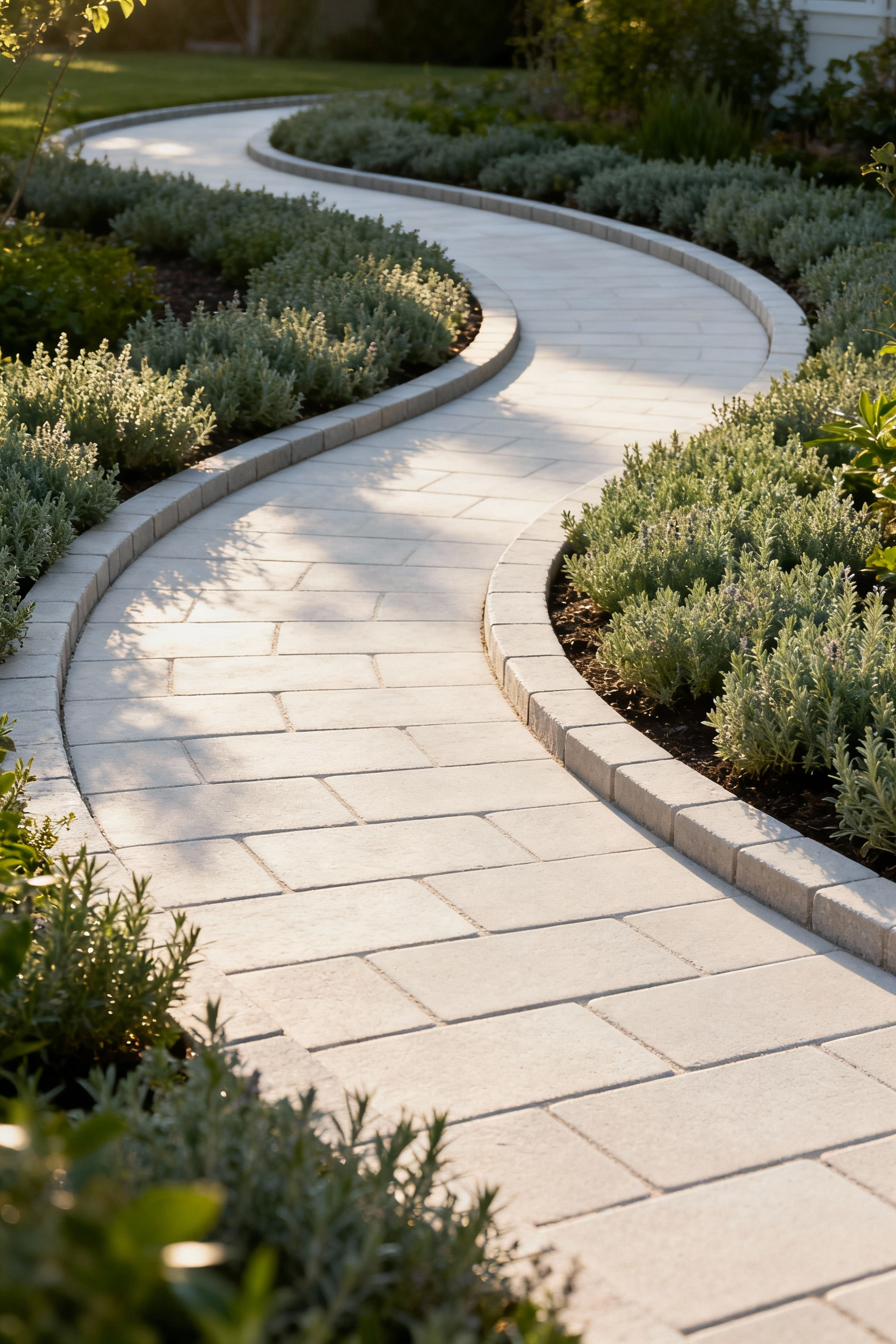
Materials matter here, too. A firm surface like compacted gravel or well-laid pavers gives good feedback and stability. And here’s a pro tip: use contrasting colors or textures to mark the edges of the path. This subtle visual cue is incredibly helpful for anyone with low vision. I’ve noticed that when paths feel generous and clear, people instinctively relax. They know the space is safe for them, and that feeling of security is the foundation of true comfort.
7. Integrating Smart Irrigation for Sustainable Water Management
Water is precious, and frankly, who has time to stand around with a hose? Smart irrigation systems are a game-changer for maintaining a beautiful garden without waste. I’m not just talking about a simple timer. Modern systems use real-time weather data and soil moisture sensors to water only when and where it’s needed. It’s efficiency at its best.

Start with drip lines or soaker hoses that deliver water directly to the roots, which minimizes evaporation. Then, group plants with similar water needs together—a practice called hydrozoning. What I’ve learned from years of accessible design is that automation gives people freedom. For an older adult or someone with a busy schedule, a smart irrigation system means they can enjoy a lush garden without the physical burden of daily watering. It’s a simple piece of tech that empowers independence.
8. Harnessing Ambient Lighting for Evening Accessibility and Ambiance
Your garden shouldn’t disappear when the sun goes down. A well-designed lighting plan extends the time you can enjoy your outdoor space while making it safer for everyone. The key is to think in layers. Start with safety: low-level path lights to illuminate walkways and prevent trips. Use discreet downlights under stair treads or bench seats.

Then, add ambiance. An uplight on a beautiful tree or a soft wash of light against a textured wall adds depth and drama. I always recommend using warm-toned, low-voltage LED lights. They’re energy-efficient and create a welcoming, gentle glow rather than a harsh, stadium-like glare. A properly lit patio feels like an outdoor living room—cozy, magical, and ready for an evening with friends.
9. Crafting Dynamic Multi-Level Terracing for Enhanced Visual Interest and Drainage
If you have a sloped yard, you don’t have a problem—you have an opportunity. Terracing can turn a challenging hill into a stunning and functional series of garden “rooms.” Each level offers a new perspective and a new purpose: a dining area on the top tier, a quiet reading nook on the next, and a vibrant cutting garden on the bottom.
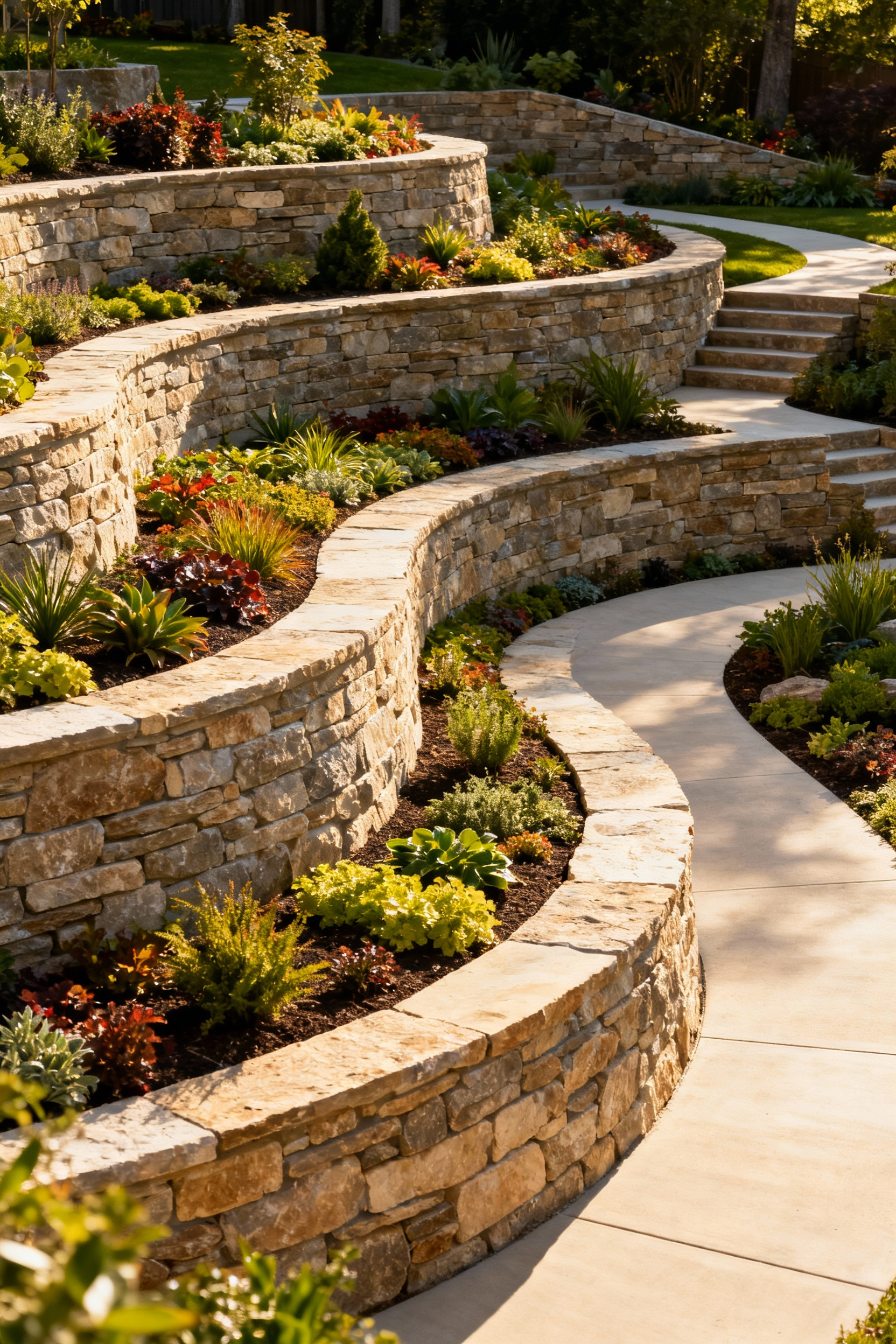
When designed with accessibility in mind, terraces are connected by wide, gently sloped ramps or a “switchback” path instead of just stairs. The retaining walls that create the terraces double as integrated seating or provide a perfect ledge for container gardens. Terracing also helps manage water runoff on a slope, preventing erosion. It’s an elegant solution that adds incredible architectural interest while solving practical problems.
Elevating Your Patio Garden Approach with Intermediate Techniques (Part 2)
Great design isn’t static; it lives and breathes with the people who use it. Selecting the right furnishings is about more than just weather-proof materials—it’s about choosing pieces that can adapt to changing needs and different occasions.
10. Selecting Adaptive Furniture Pieces to Accommodate Diverse User Needs
When choosing furniture, think beyond today. Your needs might change. Your guests’ needs are diverse. Look for pieces that are comfortable, sturdy, and easy to get in and out of. Avoid deep, slouchy sofas that can be difficult to stand up from. Instead, opt for seating with a slightly firmer cushion and a supportive back. Armrests are essential—they provide crucial support for sitting and standing.
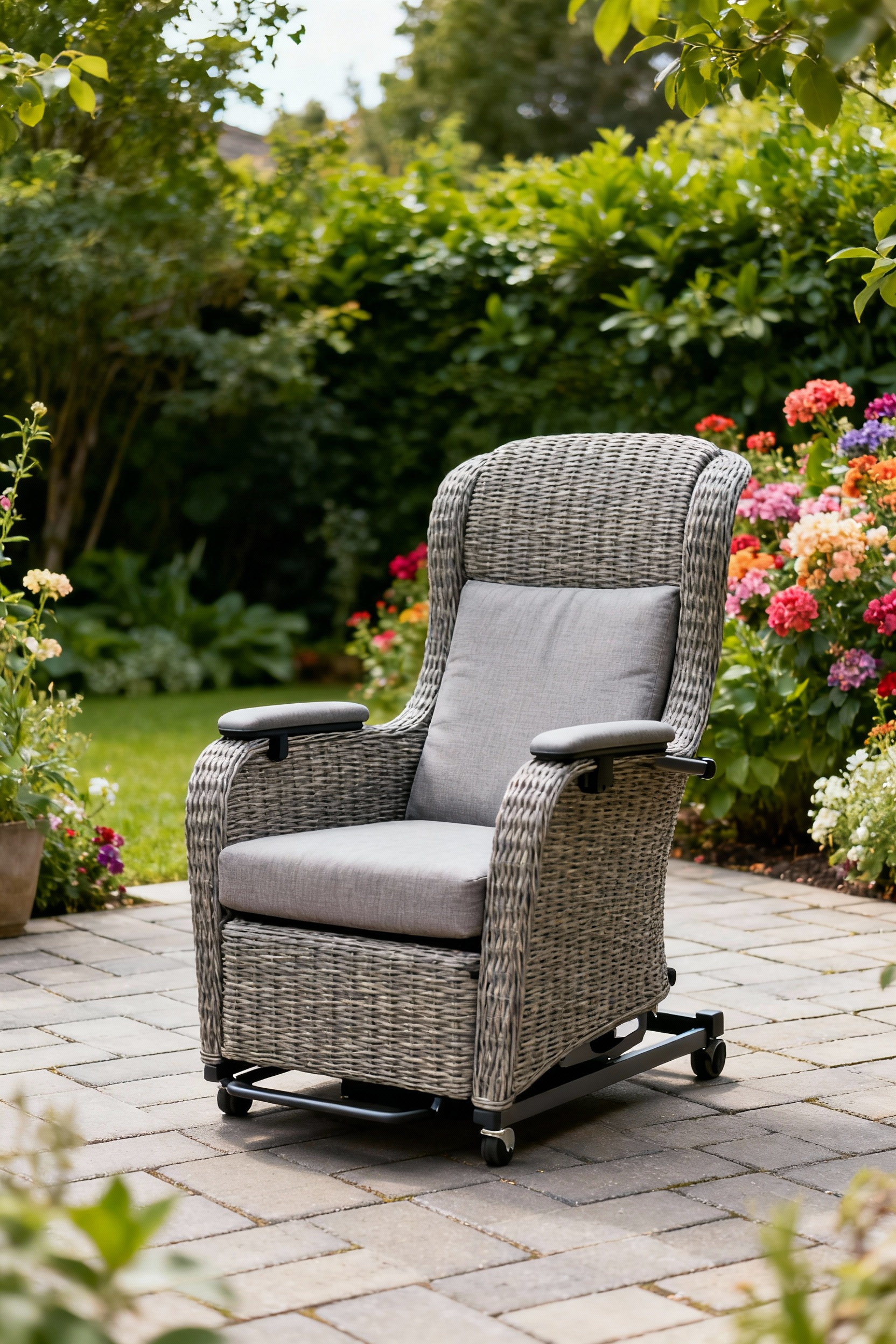
Modular furniture is a brilliant choice because it can be reconfigured to suit any occasion, from an intimate chat to a large family gathering. Look for tables at a height that allows someone in a wheelchair to pull up comfortably. Lightweight materials also make it easier for one person to rearrange the space without assistance. The goal is to create a setting that feels comfortable and empowering for every single person who uses it.
Advanced Patio Garden Strategies for Professional-Level Design (Part 1)
Ready to take it to the next level? These strategies focus on creating a truly immersive environment that nurtures well-being, optimizes natural conditions, and seamlessly blends the boundaries between inside and out.
11. Implementing Biophilic Design Principles for Enhanced Well-being
Biophilic design is a fancy term for a simple truth: humans are happier and healthier when they’re connected to nature. This is more than just having plants around. It’s about intentionally incorporating natural patterns, materials, and sensory experiences into your patio garden. Use materials like wood and stone. Add a small water feature—the sound of moving water has an instantly calming effect.

Think about how you can frame views of the garden from inside your home, so you’re always connected to the changing seasons. Arrange plants in organic, curving drifts rather than rigid lines. This approach turns your garden into a restorative sanctuary. It’s a space that doesn’t just look good, but feels good to be in.
12. Developing Zoned Microclimates to Optimize Plant Health and Human Comfort
Your patio isn’t one single environment. There’s likely a hot spot that gets baked by the afternoon sun and a shady corner that stays cool and damp. Instead of fighting these conditions, work with them. By creating intentional microclimates, you can grow a wider variety of plants and create comfortable spots for different times of the day.

A pergola with a retractable shade can create a cool oasis for summer afternoons. A strategically planted hedge can block a prevailing wind, making a seating area much more pleasant. A stone wall can absorb heat during the day and radiate it back at night, creating a cozy spot for evening drinks. Understanding and shaping these subtle environmental shifts is the mark of a truly sophisticated garden design.
13. Integrating Automated Retractable Canopies for Dynamic Sun and Rain Protection
Michigan weather is nothing if not unpredictable. An automated retractable canopy gives you ultimate control over your outdoor environment. With the push of a button, you can provide instant shade on a scorching day or shelter from a sudden downpour. It dramatically extends the usability of your patio, turning it into a true three-season room.
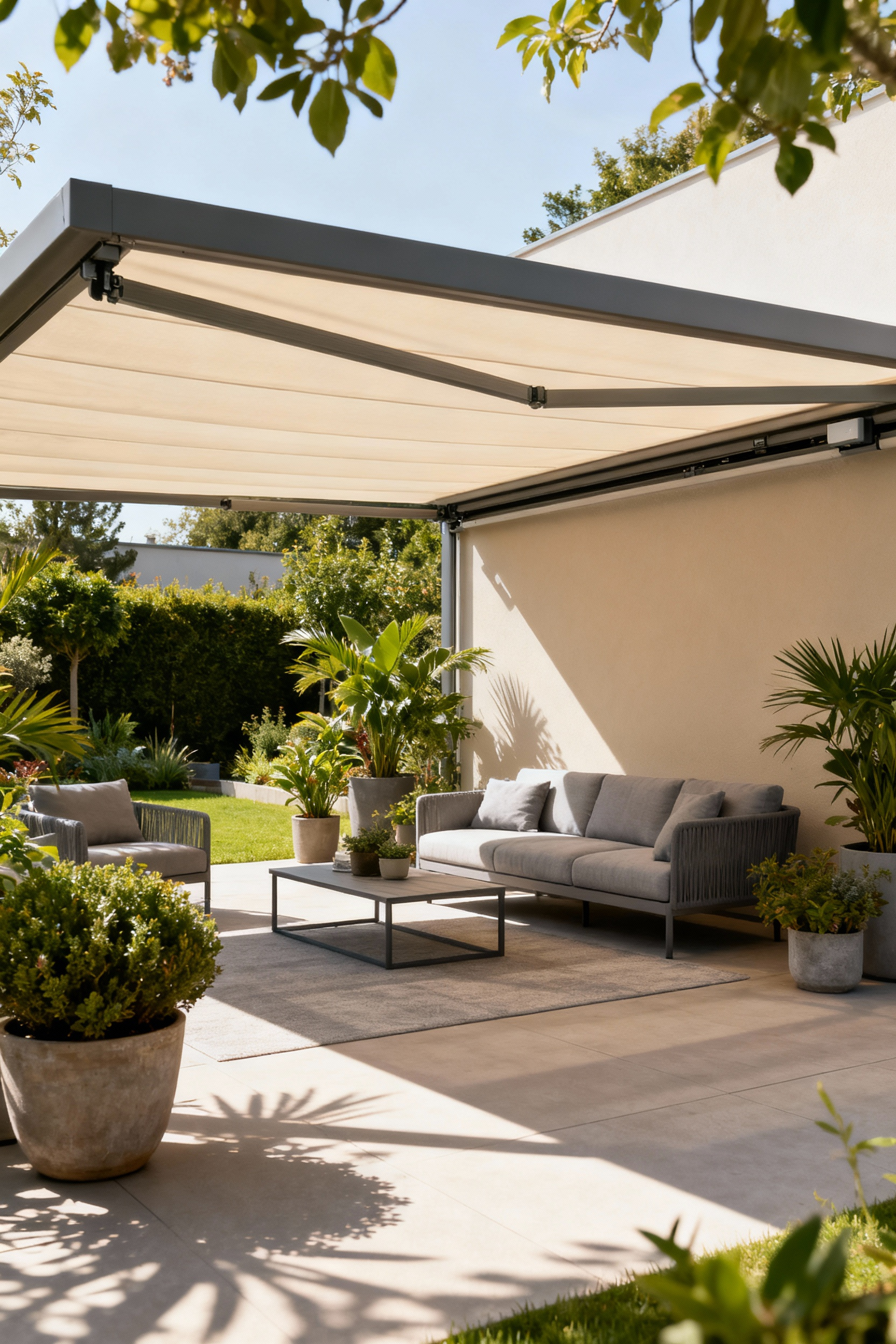
Some modern systems even have wind and sun sensors, automatically retracting in high winds to prevent damage or extending when the sun gets too intense. It’s a significant investment, but for those who want to maximize their outdoor living time, it’s a total game-changer. It offers flexibility, protection, and a very sleek, modern aesthetic.
14. Designing Seamless Transitions Between Indoor and Outdoor Living Spaces
The most inviting patio gardens feel like a natural extension of the home, not a separate zone. The key is to blur the lines between inside and out. Use similar flooring materials or colors to create a continuous visual flow. A large sliding glass door or folding doors can effectively remove the wall, merging your living room and patio into one grand entertaining space.
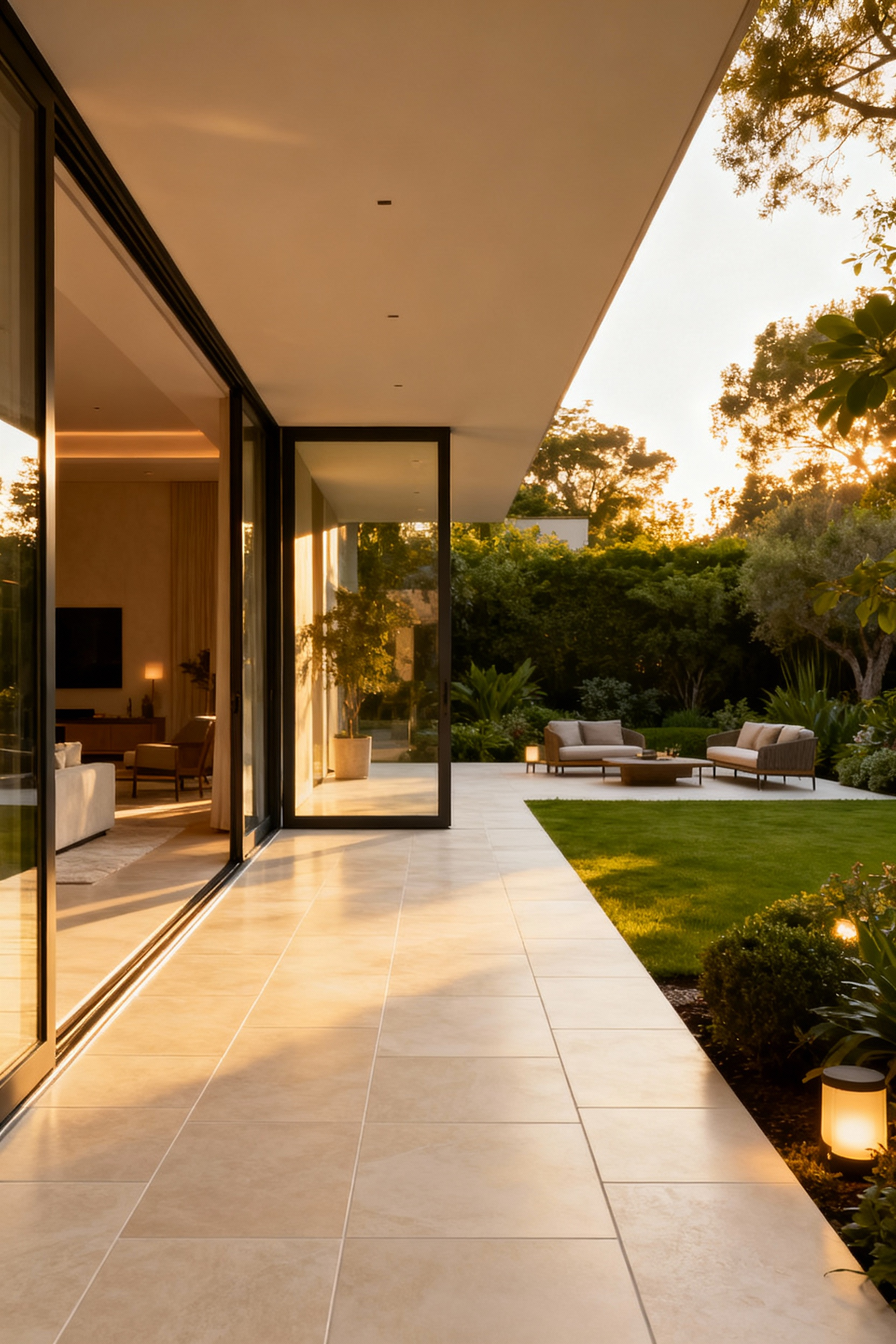
Make sure the threshold is flush with the floor—no step up or down. This tiny detail is critical for universal access. When you can move effortlessly between spaces, it completely changes how you live in your home. Your patio becomes another room, just one without a ceiling.
Advanced Patio Garden Strategies for Professional-Level Design (Part 2)
At the highest level, design considers not just the immediate space but its impact on the larger environment. This is about creating a garden that is not only beautiful and functional for you but is also a responsible and regenerative part of the ecosystem.
15. Utilizing Permeable Surfaces to Mitigate Stormwater Runoff and Enhance Ecosystems
Traditional concrete patios create a lot of water runoff, sending rain straight into the storm drains. Permeable surfaces, on the other hand, allow water to soak through into the ground, just as it would in a natural landscape. This simple shift has a huge positive impact. It recharges groundwater, filters pollutants, and reduces flooding.
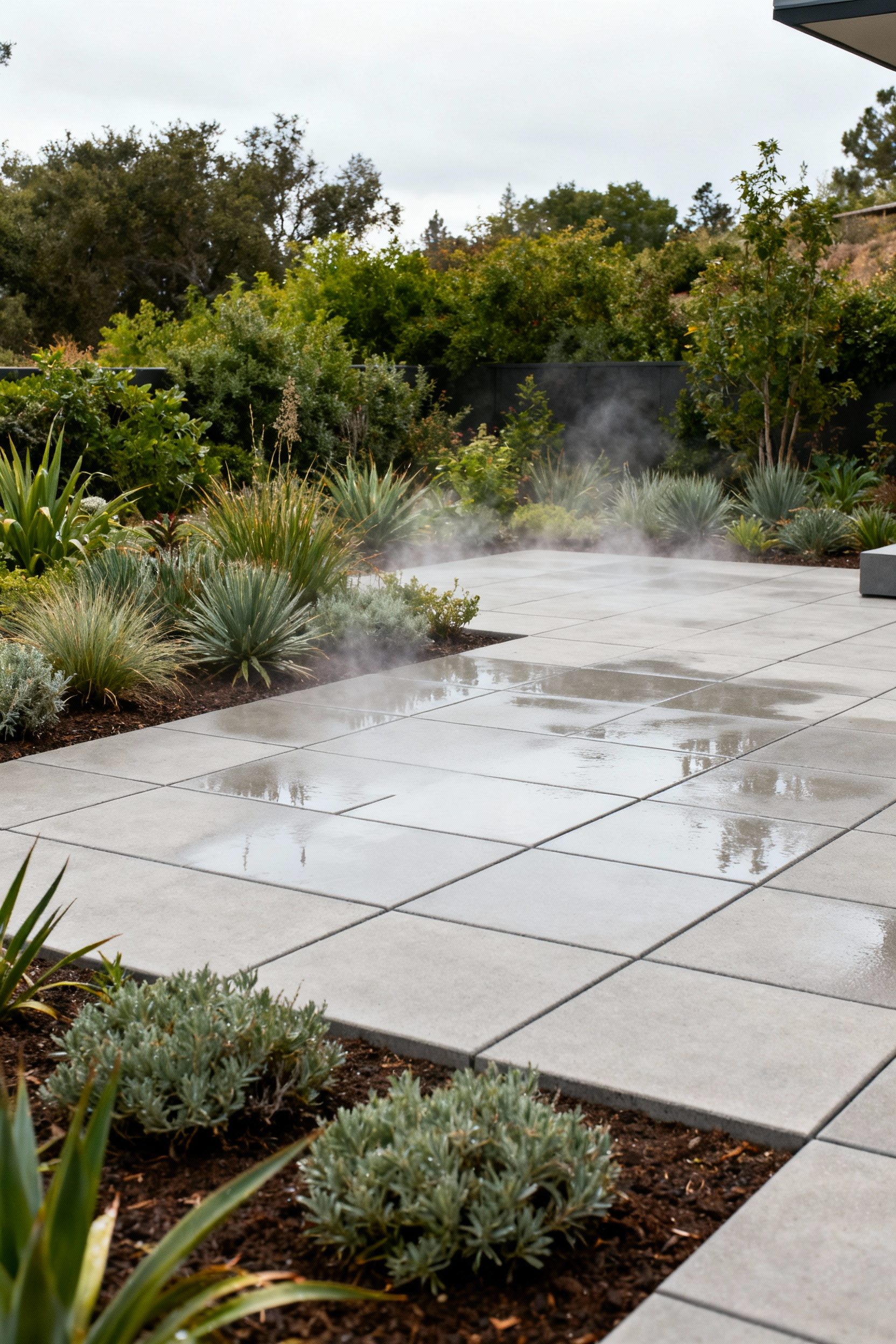
There are some beautiful options available now, like permeable pavers that look just like traditional ones but have small gaps filled with gravel, or even grass-filled grids that create a durable, drivable, yet green surface. I learned this when working on a community garden project: switching to permeable paths completely eliminated the muddy, puddled mess we used to get after every storm. It made the garden more usable for everyone, more often.
Mastering Patio Garden Integration for Expert-Level Environments (Part 1)
Expert-level design is about future-proofing. It’s about creating systems that are adaptable, intelligent, and deeply connected to the rhythm of life—both human and botanical. These ideas transform a static space into a dynamic, living environment.
16. Applying Modular Design Systems for Future Adaptability and Scalability
Life changes. Families grow, hobbies shift, and physical abilities evolve. A modular garden is one that can change right along with you. This could mean using a system of interlocking raised beds that can be reconfigured, or choosing outdoor furniture that can be arranged in different ways. It’s about avoiding permanent, fixed decisions wherever possible.
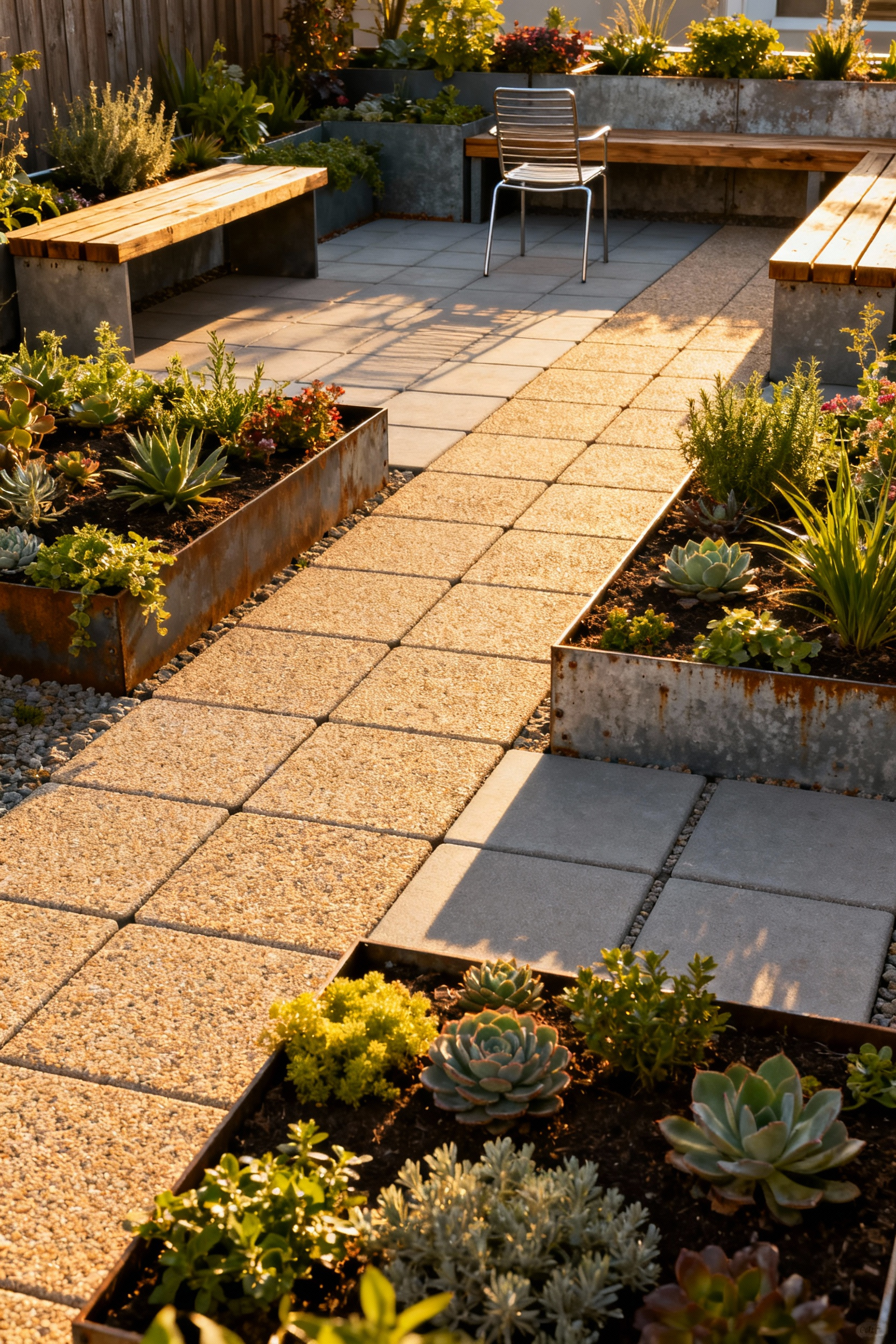
This “kit-of-parts” approach means you can start small and add on over time. If a section of decking needs repair, you can replace a single module instead of redoing the whole thing. It’s a practical, sustainable, and less intimidating way to think about long-term design, giving you the power to adapt your space as your needs change.
17. Implementing Smart Sensor Networks for Predictive Plant Care and Environmental Control
This is where gardening meets the future. Smart sensors in your soil can monitor moisture, nutrient levels, and light, sending data directly to your phone. It takes all the guesswork out of plant care. You’ll know exactly what your plants need, right when they need it. It’s like giving your garden a voice.
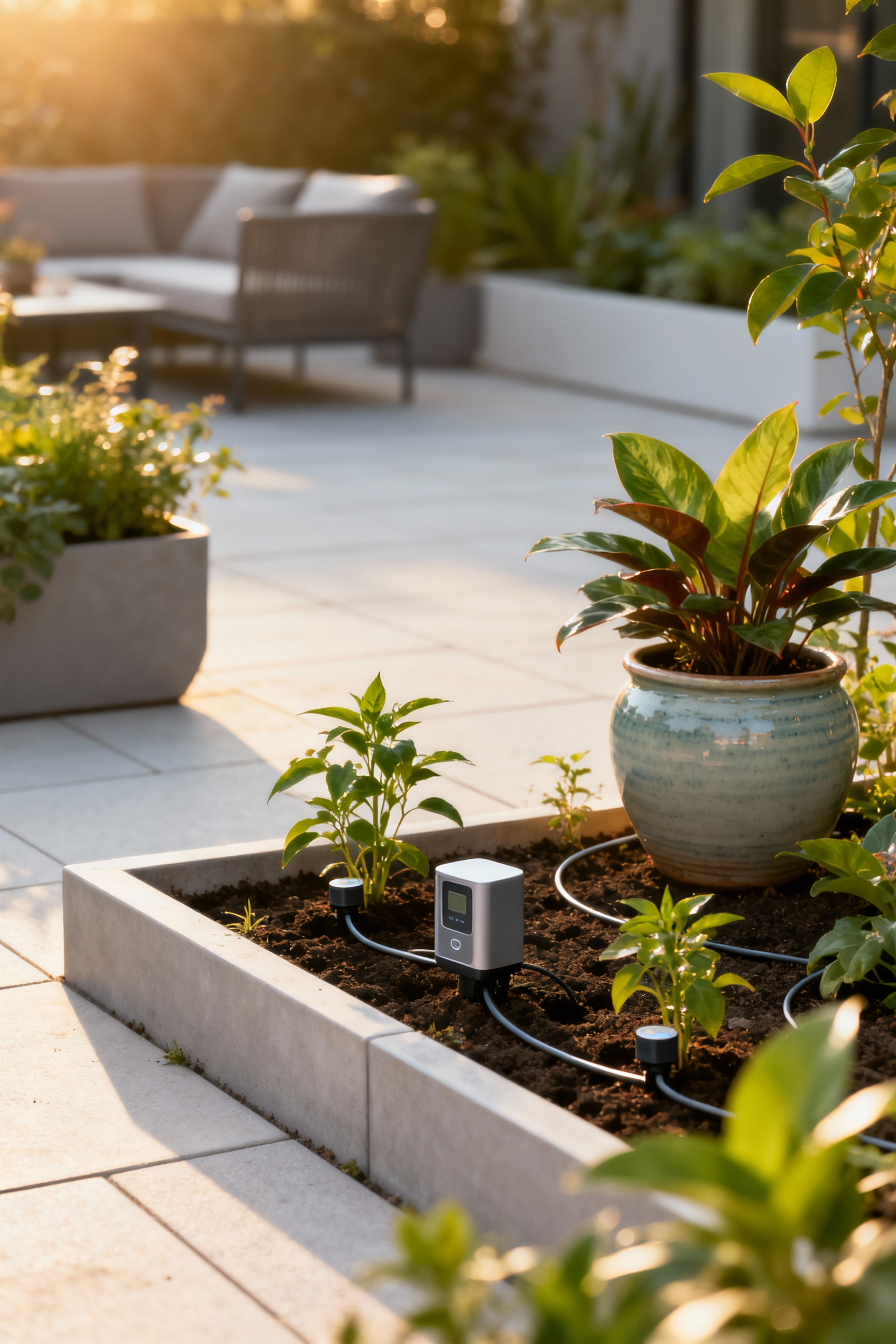
When connected to an automated irrigation system, these sensors create a responsive ecosystem. The network can anticipate a heatwave and water more deeply in the morning, or it might skip a watering cycle if it detects recent rainfall. This level of intelligent automation ensures your plants thrive, conserves resources, and frees you up to simply enjoy the beauty of your garden.
18. Cultivating Edible Landscaping within an Aesthetic and Functional Framework
An edible garden doesn’t have to look like a farm row. You can seamlessly weave vegetables, fruits, and herbs into an ornamental design. Think of a border of vibrant rainbow chard instead of hostas, a trellis covered in sweet peas and climbing beans, or blueberry bushes that offer spring flowers, summer fruit, and stunning fall color.
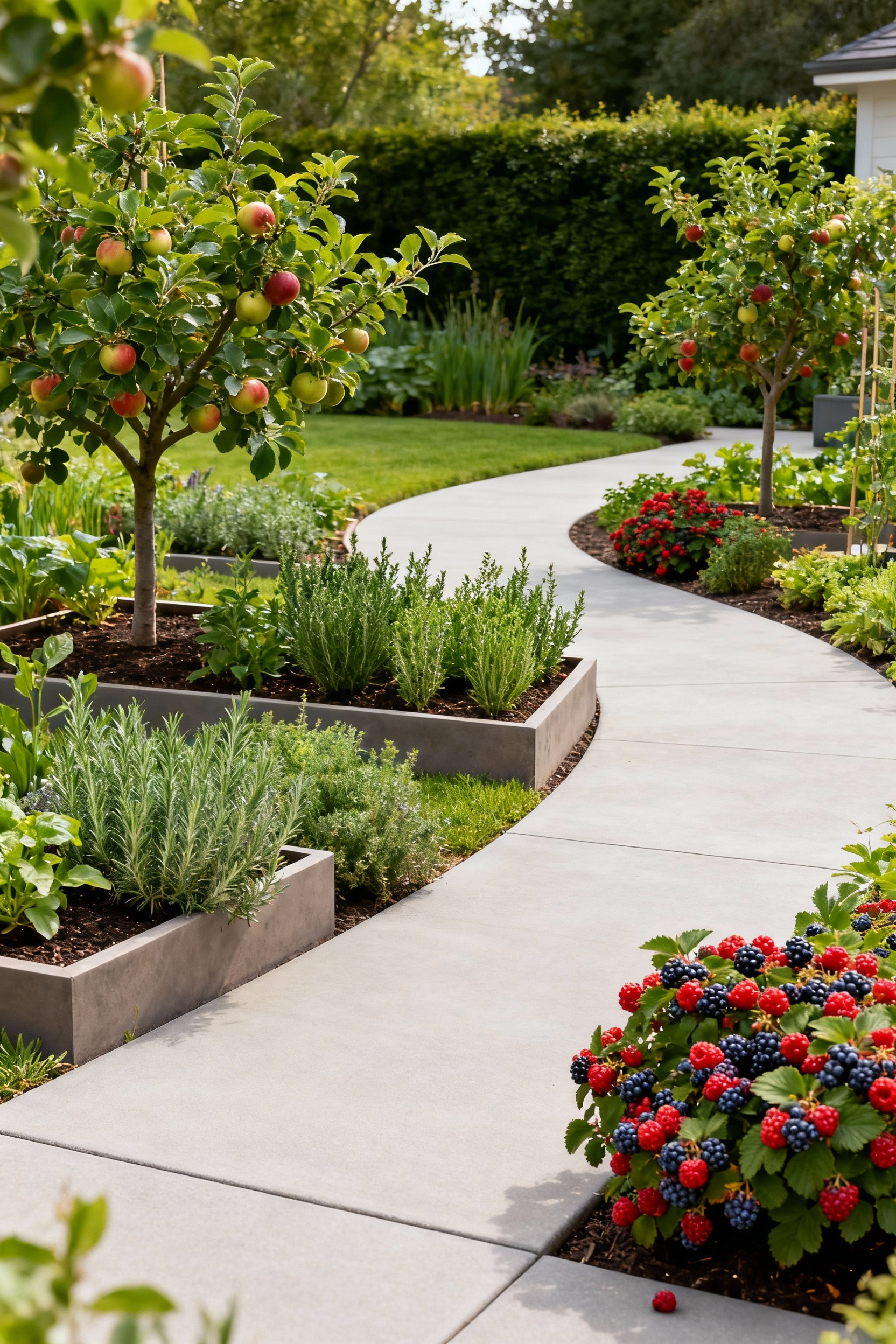
This approach celebrates both beauty and productivity. Why plant a purely ornamental shrub when you can plant one that also gives you delicious fruit? It connects you to your food source and adds a whole new layer of purpose and enjoyment to your garden. A sprig of rosemary for dinner is always just a few steps away.
19. Prioritizing Circular Economy Principles for Sustainable Material Sourcing and Waste Reduction
A truly sustainable garden is one that operates in a loop. It means making conscious choices from the very beginning. Choose materials that are recycled, reclaimed, or locally sourced to reduce your carbon footprint. Prioritize items that are built to last and can be repaired, not just replaced.
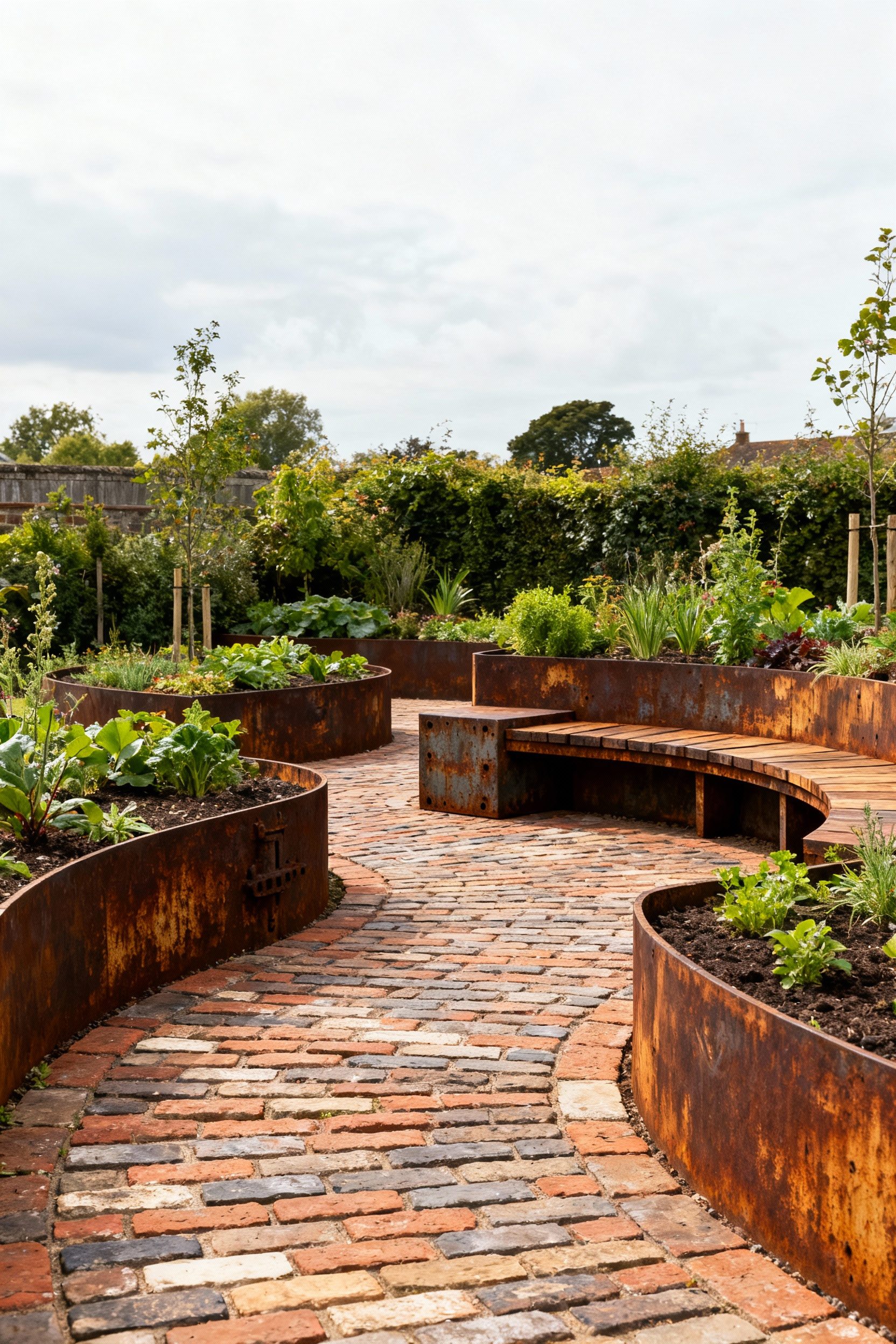
The most important part of this is composting. Every leaf, twig, and kitchen scrap goes back into the system, creating rich, nutrient-dense soil to feed your garden. It’s a simple act that eliminates waste and builds a healthier ecosystem. You stop thinking of things as “waste” and start seeing them as resources.
Mastering Patio Garden Integration for Expert-Level Environments (Part 2)
Finally, we arrive at the heart of the matter: designing for human connection. The most masterful spaces are those that engage our senses, invite interaction, and foster a sense of belonging for people of all ages and abilities.
20. Devising an Adaptive Sensory Garden for Inclusive Multi-Generational Enjoyment
A sensory garden is about creating an experience that engages touch, smell, sound, sight, and even taste. It’s a powerful way to design a space that resonates with everyone, from a young child discovering the fuzzy texture of a lamb’s ear leaf to an older adult finding peace in the scent of lavender. Start by planting fragrant herbs along a pathway, where they’ll release their scent when brushed against. Include plants with interesting textures and brightly colored flowers for visual appeal.
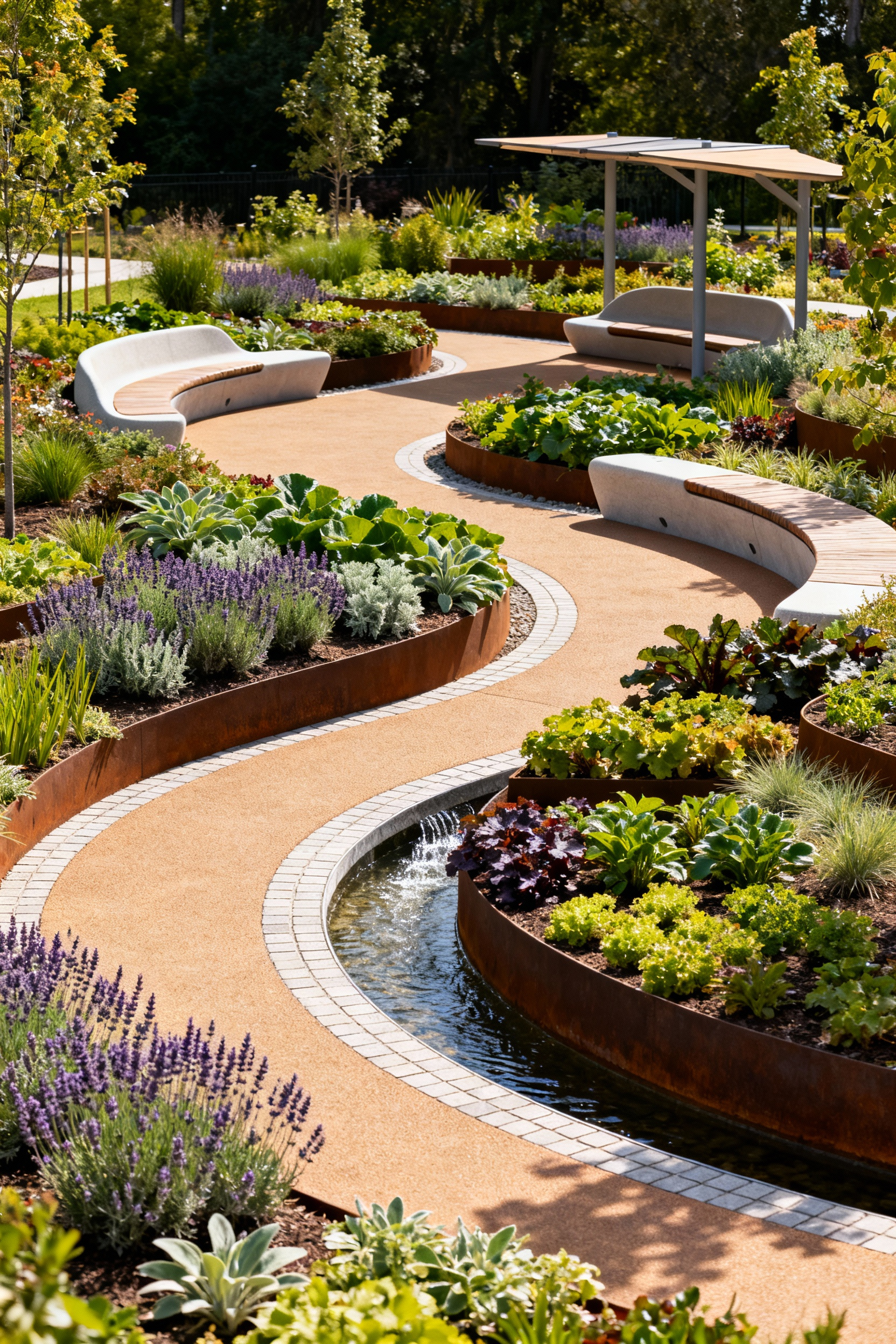
But a truly adaptive sensory garden goes further. The paths are wide and smooth. The planters are at different heights, so someone in a wheelchair can enjoy them as easily as someone standing. There’s a gentle water feature for soothing sound and robust seating for comfortable rest. What I tell my clients and readers is that a great sensory garden becomes a destination for connection. It’s where a grandmother can share a story with her grandchild while they shell peas together. It’s a space that doesn’t just accommodate everyone; it actively invites them to participate, connect, and belong.
Conclusion
For years, we’ve been told that a garden that is accessible must be sterile, and a garden that is beautiful must be demanding. That was never true. We’ve walked through 20 ideas that prove thoughtful, inclusive design is simply better design. It creates spaces that are not only more beautiful and functional but are woven into the very fabric of our lives, ready to adapt and support us through every change.
This isn’t about trends. It’s about a timeless, compassionate approach to creating a home. These strategies are your toolkit for building an outdoor space that lasts—one that feels like a true extension of your life. I hope you now see your own patio not as a static patch of land, but as a living canvas full of potential. Potential for growth, for connection, and for years of shared joy. A beautiful, accessible garden isn’t a compromise. It’s a promise that your home will always be a place of comfort and belonging, for everyone.






